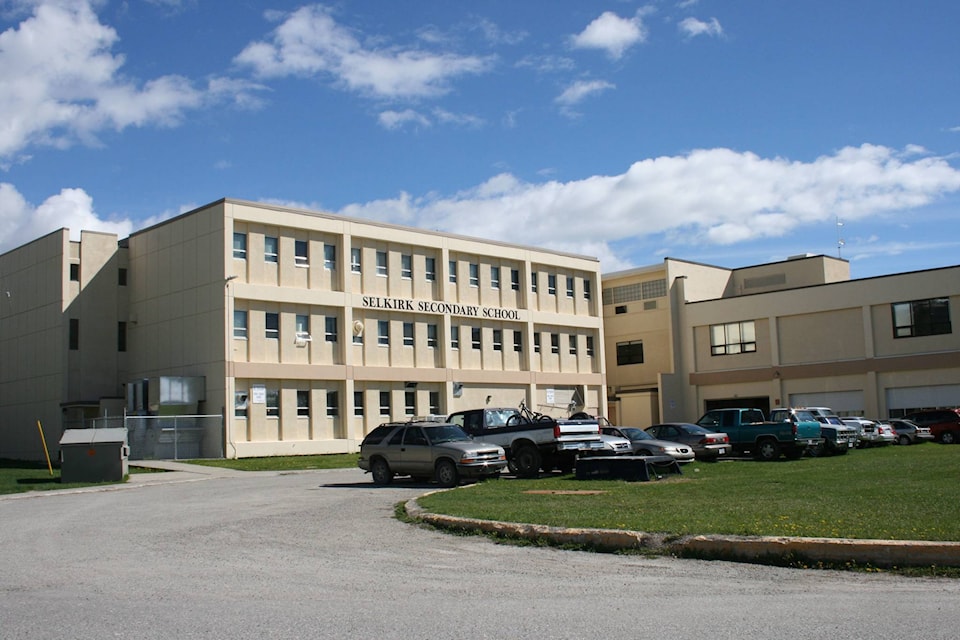By Tom Fletcher, with files from Carolyn Grant
Credible reports of armed intruders are rare for B.C. schools, but they do happen.
A middle school in Central Saanich is a recent example, after the administration received multiple student reports on March 1 of a man hiding in bushes near the school with what may have been a weapon.
As most schools do in an annual drill, a lockdown went into effect and police were notified. Doors are locked,students go into closets or under desks, blinds are closed, lights turned off and everyone keeps quiet while the threat is assessed.
At Bayside middle school that day, the regional police Emergency Response Team arrived with an armoured vehicle, extra weapons and a dog handler to search a one-kilometre radius of the school. It would take a nerve-wracking five hours before parents could be told the threat was ended. No suspect was located.
B.C. Education Minister Rob Fleming says communication, reporting and awareness are keys to the ministry’s system established in 2012, known as the Expect Respect and A Safe Education (ERASE) Bullying Strategy. Areview for updates is currently underway.
“When you look at events south of the border, I think school districts are looking for ways they can evaluate whether what we have in B.C. schools is significant enough,” Fleming told Black Press. “A lot of it is acting on tips. Information comes from students talking in the school, that gets to a teacher, maybe a parent, and it’s passed to a principal or a school administrator.”
The ministry’s ERASE Bullying website includes a reporting tool where students can anonymously warn the administration of threats or harassment against students. That includes online harassment, to identify situations that could lead to violence.
In 2017, training for “digital threat assessment” was introduced, and 17,000 staff have completed the training. A provincial team of experts in violence risk assessment and prevention gives direct support to schools and school districts on high-risk cases and critical incidents.
Fleming notes that local school districts are ultimately responsible for security policies, but all boards of education and independent school authorities must have lockdown procedures in place.
And as remote a possibility as it may seem in this area, School District 6 is prepared.
“Rocky Mountain School District is committed to creating and maintaining school environments in which students, staff, parents, and others are safe,” said Jennifer Turner, Assistant Superintendent and Safe School Coordinator. “Our school district, along with all 6 districts in the Kootenay Boundary Region have developed and signed support of a Violent Threat Risk Assessment and Intervention Protocol. Signatories include the Southeast District Commander of the RCMP, the Executive Director of the Ministry of Children and Families, and all six Superintendent of Schools. Each school has a team that receives regular training in Violence Threat Risk Assessment and this work is done in partnership with our community partners.
“At the beginning of each year we issue a Fair Notice Brochure, that describes the assessment model and steps that staff will take when they learn of a threat of violence. The intent of the protocol, fair notice to parents and students, and the multi-disciplinary risk assessment process is to reduce violence, to reflect a safe and restorative culture, and to promote support and prevention-based services for youth who pose a risk of violence to themselves or to others.
“In addition to protocols, staff training, and parent communication we have physical supports within our system. This includes a blue strobe warning system which is activated in the event of a lock down, and wherever possible, we lock perimeter doors during class time. Interior classroom doors remain pre-locked during the day. We have video surveillance in place at our largest schools and on our district busses and we have sign-in procedures and name-tags for non-school personnel. To ensure that students are familiar with emergency responses we conduct regular drills for Fire, Evacuation, and Lockdown. Our most recent staff training had 100 staff from across the Kootenay Boundary attend a two-day summit on Trauma and the impact of Trauma on Systems. This training was led by Kevin Cameron, Director for the Canadian Centre for Threat Assessment and Trauma Response.”
B.C. schools are generally designed so almost all doors, internal and external, can be locked, ministry officials say. Many have policies where all doors are kept locked except one close to the office to ensure visitors checkin.
Education ministry officials say many B.C. districts have gone to mandatory identification badges for school entry. Some have used the authority available under the School Act to install video surveillance cameras, which requires approval of the individual school planning council.
